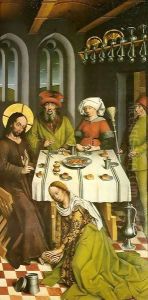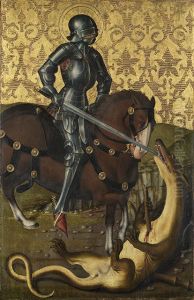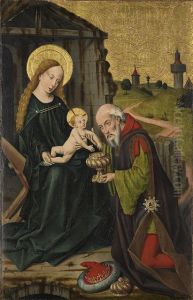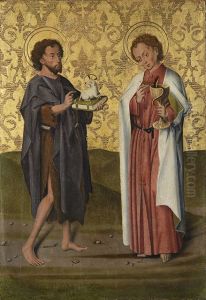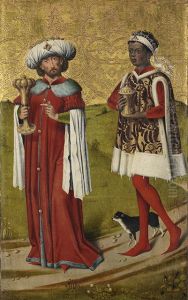Friedrich Herlin Paintings
Friedrich Herlin was a late Gothic painter, active in southern Germany during the 15th century. Not much is known about his early life, including the precise date and place of his birth, but it is generally believed that he was born around 1425 to 1430. He is primarily associated with the town of Nördlingen, where he became a citizen in 1447 and where much of his known work is located.
Herlin’s work reflects the transitional period in European art as it moved from the medieval Gothic style towards the Renaissance. Despite this transitional phase, his style remained largely conservative, and he was influenced by the art of the late Middle Ages. His paintings often featured religious subjects, common for the time, with a focus on meticulous detail and a rich use of color.
One of his most significant contributions to the art world is the High Altar of St. George's Church in Nördlingen, completed in 1462. This work showcases his ability to combine the intricate detail characteristic of Gothic art with a nascent sense of perspective and volume that hints at the coming changes in artistic representation. Herlin also painted a number of portraits and frescoes, which further demonstrate his skill and versatility as an artist.
Herlin's influence extended to his role as a teacher and mentor. His workshop in Nördlingen became a center for artistic training and production. Among his known students was Michael Wolgemut, who would later become Albrecht Dürer’s teacher, thereby linking Herlin indirectly to one of the most important figures of the Northern Renaissance.
Friedrich Herlin died in 1500 in Nördlingen. His legacy endures through his contributions to the art of his region and his role in the transition from Gothic to Renaissance styles in Northern European painting. Although not as widely recognized as some of his contemporaries, his works are an important part of the art historical record of the 15th century.
